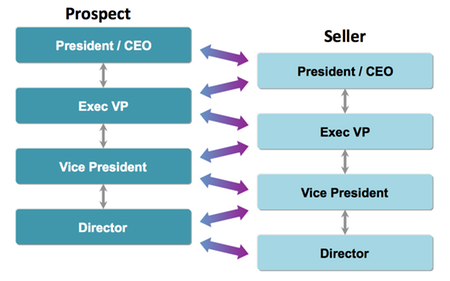Many bidders seeking to adopt our strategy-first approach find their biggest stumbling block is lack of a prospect familiarity and/or project knowledge. They often realize this only after the RFP is released—when the window for communication has closed.
In the past, we’ve posted on the critical importance of developing intimacy with your prospects. The aim is to build deep relationships that also enable learning about strategic drivers and hot button issues.
Complex2Clear doesn’t focus on pre-RFP sales processes—but our strategy facilitation and implementation work relies on the information it produces. This is true for all opportunities—but especially when chasing large contracts issued by large organizations.
Team selling in large accounts
For large prospects—a financial institution or government agency, for example—one-to-one selling is seldom enough to be seen as a serious contender for large contracts. In these cases, the most successful companies deploy teams.
Savvy teams use the fact that most individuals prefer to deal with those in comparable or more senior positions. CEOs, for example, are most comfortable working with other CEOs or board members. Below this level, prospect company individuals often welcome relationships with those at a higher level in vendor companies. So, rather than focussing solely on their peers at a prospect, sales team members should also build relationships with those at a level below (see illustration).

Within this network of relationships, one or more connections usually become critical to the sale, and can be developed accordingly.
What if you’re small?
For small companies, selling into larger prospects is challenging. Two strategies that can help build the needed relationships and understanding are these:
- Invite a colleague to meetings with large prospects, to lessen the pressure on you, and to gain another perspective. Be sure to agree on your respective roles in each meeting.
- Expand the conversation: Once you’re comfortable with your main contact, ask as often as possible: “Who else should be involved?” or “Who else will be part of this decision?” If your contact hesitates, use your sense of likely technical buyers and user buyers and be more specific.
- Partner with others: Seek out one or more allies who can help you build a more robust solution. Your ideal partner also knows the prospect. It’s better to share a large opportunity than to lose it by looking too small. As above, be sure to agree beforehand on your respective roles.
Start early
For large projects, two years or more pre-RFP is not too early to start building relationships and gathering facts—not to mention shaping the requirements to better suit your solution. Well managed, this patient work always pays dividends.


